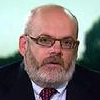Inflation is well below the Fed’s 2% target and barely stirring. Yet Federal Reserve officials have insisted they intend to raise interest rates on Wednesday.
What gives?
The answer is that the central bank’s goal with interest-rate policy is to engineer “moderately” tighter financial conditions, said Ethan Harris, global economist at Bank of America Merrill Lynch.
The Fed hopes that raising the yield curve will create a modest restraint on growth, allowing the expansion to continue at a steady pace without overheating.
So far, the Fed’s gradual rate hikes have failed to tighten conditions. The stock market continues to routinely set records, and the 10-year Treasury yield is virtually unchanged after the Fed has increased interest rates four times.
Far from causing a rethink, the absence of a market response will “embolden” the Fed to hike more, Harris said.
New York Fed President William Dudley has repeatedly warned the Fed would raise rates at a faster clip if financial conditions did not tighten as desired.
Read: Fed’s Dudley shows no signs of wavering from support for December interest-rate hike
“All else equal, an easing of financial conditions may warrant a somewhat steeper policy rate path,” Dudley said.
Federal Reserve officials will meet Tuesday and Wednesday to set monetary policy. Markets see a rate hike as a done deal.
At 2 p.m. Eastern on Wednesday, the Fed will release a policy statement, revised economic forecasts and “dot plot” projections of future rate hikes. Fed Chairwoman Janet Yellen will hold what is likely to be her final press conference at 2:30 p.m. Eastern.
Vincent Reinhart, chief economist at Standish Mellon, said low inflation would allow the Fed to justify standing pat.
But scarred from the financial crisis, the Fed wants to combat market overshooting, he said.
“They know that financial excesses are costly,” he said.
Reinhart said current policy is not dissimilar to the steady quarter-point rate hikes seen from 2004-2006. The only thing missing is the phrase “measured pace,” he said.
Beginning in the summer of 2004, the Fed raised its short-term rate target from 1.25% to 5.25% in 17 straight quarter-point moves. But the policy failed to trigger tighter financial conditions, Harris noted.
See: Jobs data keeps Fed on gradual rate-hike path
The Fed is now projecting three rate hikes next year. Some analysts think the Fed could bump its projections to four moves next year but most think the central bank will wait for any dramatic signals until after Jerome Powell is confirmed by the Senate as the next chairman.
“Ultimately, we think the proposed [Republican] tax cut will be enough to move the median FOMC fed funds forecast for 2018 up from three rate hikes to four, but that forecast adjustment can wait until next quarter,” said Lou Crandall, chief economist at Wrightson ICAP, in a note to clients.
In a speech late last month, Dallas Fed President Rob Kaplan, a centrist on the Fed’s policy committee, highlighted that potential financial imbalances were a main factor leading him to support a December rate hike. He noted that the stock market has now gone 12 months without a 3% decline.
Fed doves want the central bank to use bank supervision tools to tighten financial conditions.
Many analysts say the so-called yield curve may flatten and could cause the Fed to abort its rate-hike cycle. The yield curve is a line plotting the yields across Treasury maturities from the shortest dated to the longest, and can reflect investor expectations for growth and inflation. An inverted yield curve is widely considered a precursor to a recession.
But Harris thinks this time is different. Several technical factors, including the Fed’s bond buying, have altered the measure.
See: Why the yield curve may invert even if the Fed sees inflation pick up
“With strong growth, and strength across asset markets, the Fed is likely to view low bond yields as just another sign of easy financial conditions. Why would they assume the bond market is right about weak growth and every other market is wrong?” he asked.


